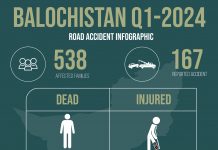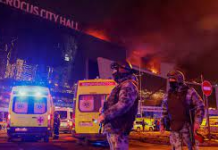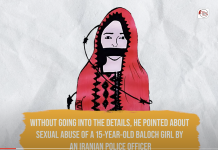In the first quarter of 2024, Balochistan’s roads witnessed a concerning number of traffic incidents. The region, known for its challenging driving conditions, saw over a hundred accidents that led to significant human and material losses. The ongoing situation underscores the persistent hazards that motorists and pedestrians face on these routes.
According to the latest figures from The Balochistan Post, the region recorded 167 road accidents in this period. While records indicate 121 fatalities, the number of individuals who sustained injuries stands at over 417. The repercussions of these accidents have touched 538 families, leaving a lasting impact on the community.
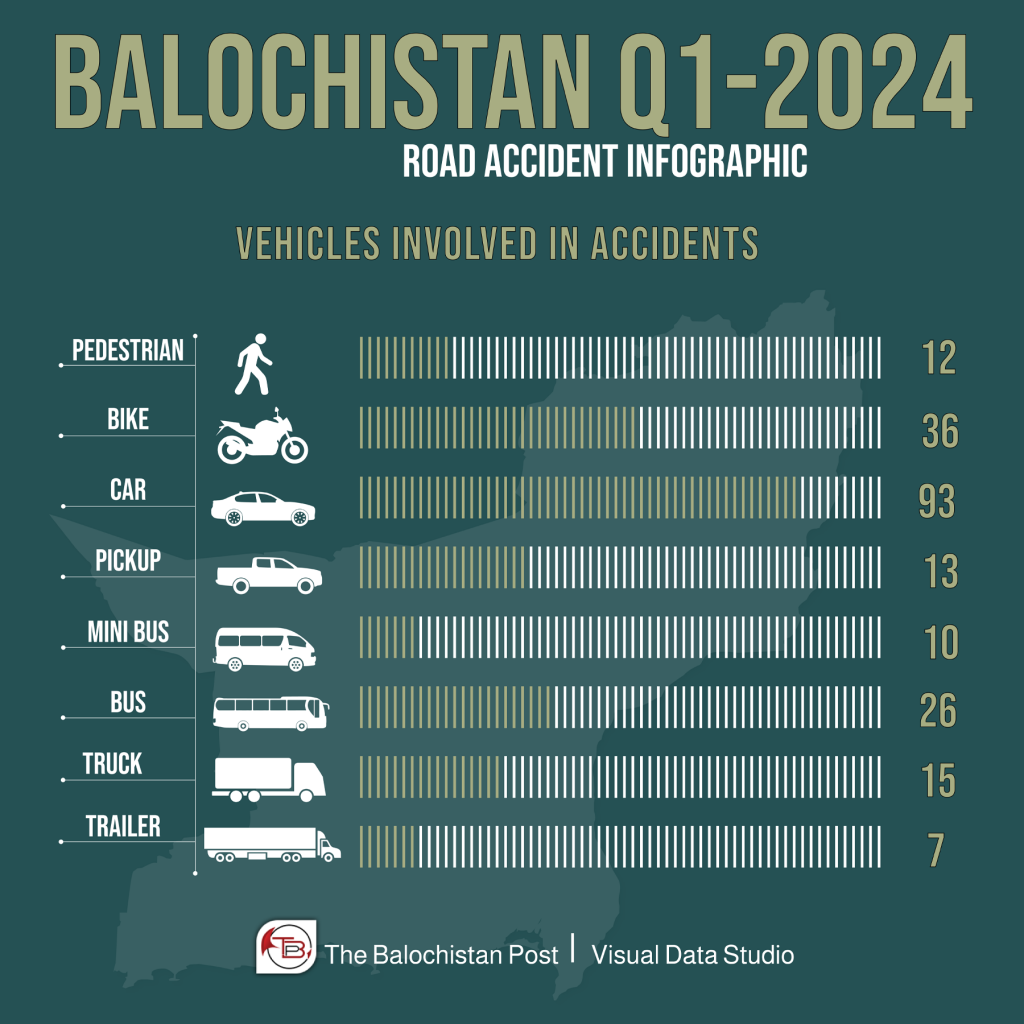
The data paints a stark picture of the road safety crisis in Balochistan. The types of vehicles involved in these accidents varied, with 93 cars, 36 motorbikes, 26 buses, 15 trucks, 12 pedestrians, 7 trailers, 10 mini buses, and 13 pickup trucks being reported.
The distribution of accidents across different areas also highlights regional disparities in road safety:
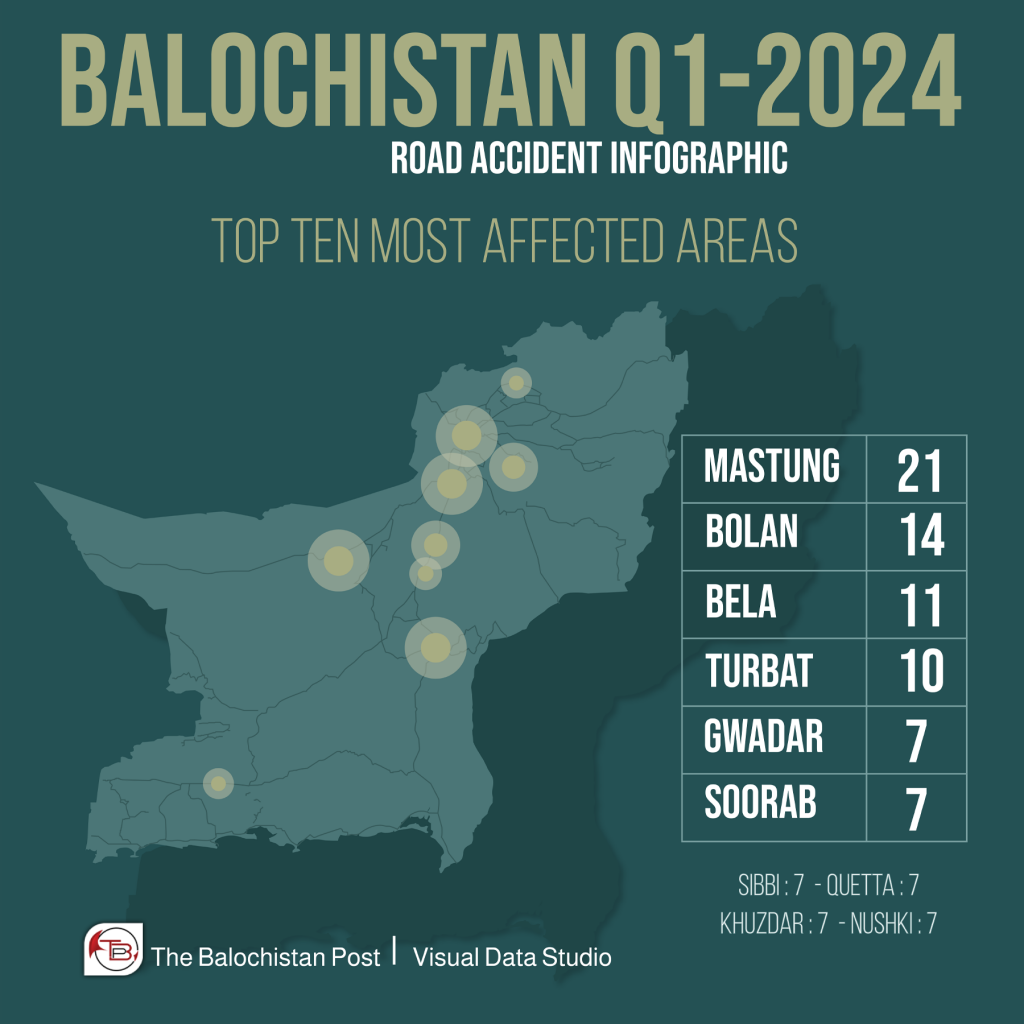
- Mastung: 21
- Bolan: 14
- Bela: 11
- Turbat: 10
- Gwadar: 7
- Soorab: 7
- Quetta: 7
- Noshki: 7
- Khuzdar: 7
- Sibbi: 7
These figures, while a snapshot, are indicative of a larger, more complex issue. The Quetta-Karachi highway, often referred to as the “killer highway,” remains a critical concern due to its high accident rate. Contributing factors include its inadequate width, the absence of divided lanes, scarce medical facilities, and frequent driver negligence.
The stretch of highway connecting Quetta to Khuzdar was particularly perilous, with Mastung leading in reported accidents. This trend is a grim reminder of the ongoing challenges faced by those traveling on Balochistan’s roads. The report will continue to explore the reasons behind these accidents in subsequent sections.
Underlying Reasons:
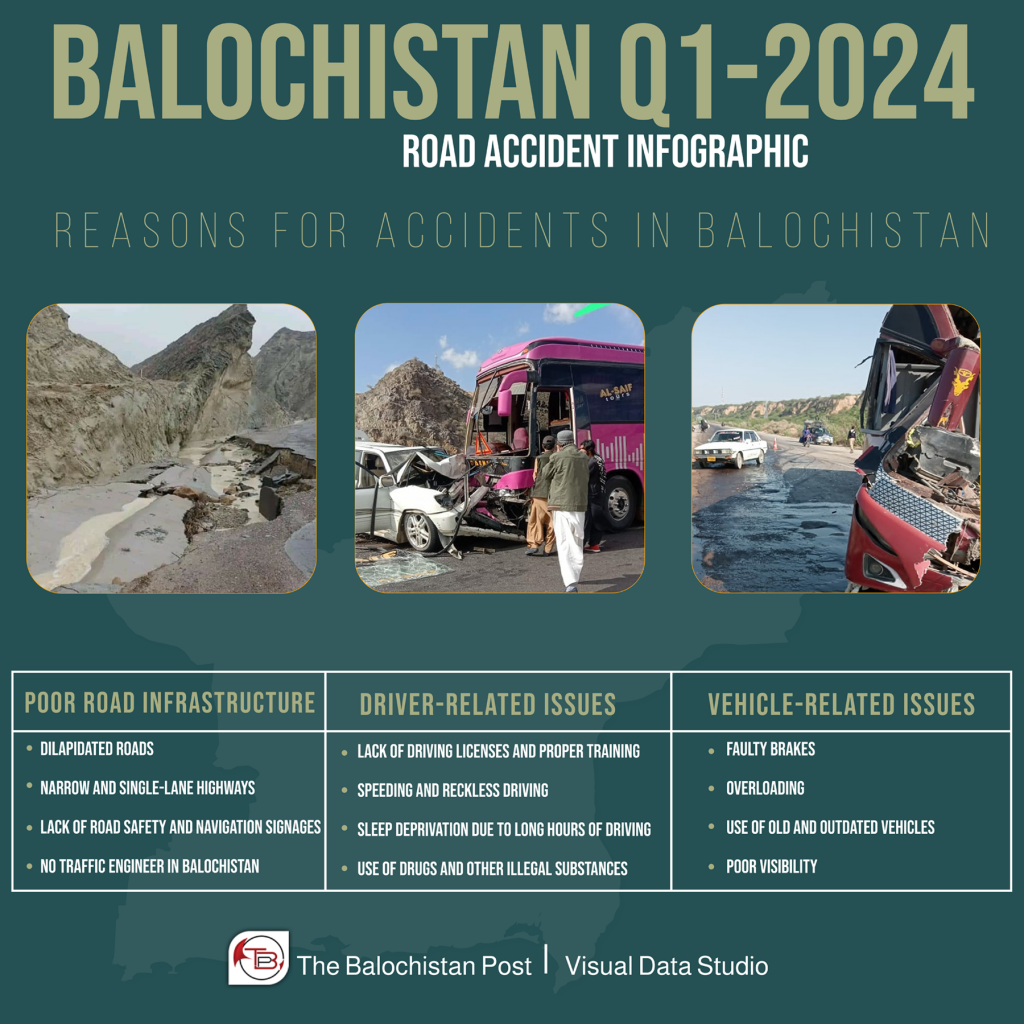
The reasons behind the road accidents in Balochistan are multifaceted and interlinked, painting a complex picture of neglect and hazard. Balochistan’s roads, many of which were severely damaged in the floods of 2022, remain in a state of disrepair. The dilapidated conditions of these thoroughfares are a primary contributor to the accidents, with potholes and uneven surfaces posing constant threats to motorists.
Adding to the peril are the narrow and single-lane highways that snake through the region. Despite repeated calls from activists for road expansion, the government’s response has been sluggish, leaving drivers to navigate these treacherous paths often too cramped for safe passage. The lack of adequate safety and navigation signage further exacerbates the risk, leaving drivers to rely on guesswork and familiarity rather than clear instructions.
The absence of traffic engineers in the province means that many of these issues go unaddressed, with no expert oversight to guide road safety improvements. This is compounded by a systemic lack of driving licenses and proper training among motorists, resulting in a populace ill-equipped to handle the demanding driving conditions.
Reckless behaviors such as speeding and driving without due care are rampant, often leading to tragic outcomes. Many drivers, pressed by long hours behind the wheel, succumb to sleep deprivation, impairing their judgment and reaction times. The situation is worsened by the use of drugs and other illegal substances, which some drivers turn to in an attempt to stay alert, only to impair their faculties further.
Mechanical failures also play a significant role, with faulty brakes and overloading of vehicles being common issues. The use of old and outdated vehicles, which are more prone to breakdowns, adds another layer of danger to the already hazardous roads. Finally, the region’s weather conditions often lead to poor visibility, making the act of driving a gamble against the elements.
These factors, individually and collectively, contribute to a road safety crisis that demands urgent attention and comprehensive measures to safeguard the lives of those who travel on Balochistan’s highways.

